|
Xtend
 Listen
Listen
 Jokes
Jokes
 Picture
Picture
 Evolution
Evolution
 Dictionary
Dictionary
 Animation
Animation
 Internet
Internet
 Projects
Projects
 Home
Home
|
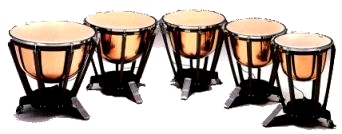 Timpani
Drums
The drums are the most ancient
instruments in history. By stretching skins
of animals on a wooden frame, different peoples created various drums.
In African tribes,
you can still notice the importance they keep to this very day, in festivities,
dancing, rituals and even communication, delivering messages over a big
distance. Similarly, in every other civilization on the face of the earth,
the drum is always a member in folk music Timpani
Drums
The drums are the most ancient
instruments in history. By stretching skins
of animals on a wooden frame, different peoples created various drums.
In African tribes,
you can still notice the importance they keep to this very day, in festivities,
dancing, rituals and even communication, delivering messages over a big
distance. Similarly, in every other civilization on the face of the earth,
the drum is always a member in folk music . .
 In
the orchestra, the drums play the role of underlining the rhythm and backing
the orchestra in sections of music charged in energy and atmosphere. In
the orchestra, the drums play the role of underlining the rhythm and backing
the orchestra in sections of music charged in energy and atmosphere.
- The timpani, the big kettledrums
(shaped as large kettles - the source of their name), allow
tuning in accordance to the piece performed,
and they were introduced to the orchestra by Lully .
Handel .
Handel used no less than 16 of them, along with 12
side drums
used no less than 16 of them, along with 12
side drums ,
in his "Water Music" ,
in his "Water Music" ,
performed outdoors. Berlioz ,
performed outdoors. Berlioz expanded the possibilities of combining them
in orchestration
expanded the possibilities of combining them
in orchestration and their notation system, and in fact made them equal partners.
The foot pedal installed in them,
enables altering sound pitch in the course of playing.
Richard Strauss
and their notation system, and in fact made them equal partners.
The foot pedal installed in them,
enables altering sound pitch in the course of playing.
Richard Strauss uses the timpanies as a declaration in the opening to his symphonic
poem
uses the timpanies as a declaration in the opening to his symphonic
poem "Also Sprach Zarathustra"
"Also Sprach Zarathustra" .
Prokofiev .
Prokofiev emphasizes the hunters' gunshots in "Peter
and the Wolf" with their help.
The timpani is struck with big
drumsticks wrapped in felt. The kettledrum is defined as a percussion instrument
that produces a definite pitch, and in this sense it is different from
the other instruments in this group.
emphasizes the hunters' gunshots in "Peter
and the Wolf" with their help.
The timpani is struck with big
drumsticks wrapped in felt. The kettledrum is defined as a percussion instrument
that produces a definite pitch, and in this sense it is different from
the other instruments in this group.
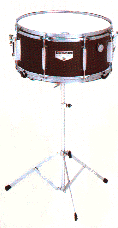 Snare
Drum Snare
Drum
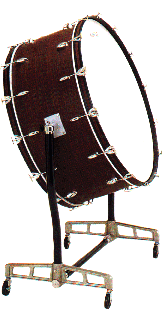 Big
Drum Big
Drum
- The Grand drum
is the bass drum, producing an unpitched sound,
and it intensifies atmosphere in the orchestra: a strong, echoing sound,
produced by a strong hammering, and mysterious gloom in the light beat.
- The side drum
is the parade drum, and the scattering sound
of its drumsticks is its characteristic sound. In Ravel's "Bolero"
"Bolero" ,
it plays the rhythm throughout the entire piece. Rossini ,
it plays the rhythm throughout the entire piece. Rossini opens his overture to "The
Thieving Magpie" ("La Gazza Ladra")
with this instrument.
opens his overture to "The
Thieving Magpie" ("La Gazza Ladra")
with this instrument.
- The Tambourine is smaller than orchestral drums. At the sides
of the rim, on which the leather is stretched, are metal jingles, providing
its unique ringing sound.
is smaller than orchestral drums. At the sides
of the rim, on which the leather is stretched, are metal jingles, providing
its unique ringing sound.
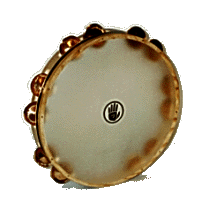
Tambourine

Drums in different cultures
 Drummers in Japan
Drummers in Japan
|
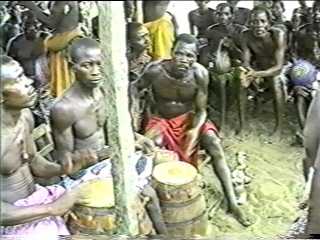 Drummers in Africa
Drummers in Africa
|
|
Composers

Lully

Handel

Rossini

Berlioz

Ravel

Strauss, Richard

Prokofiev
|